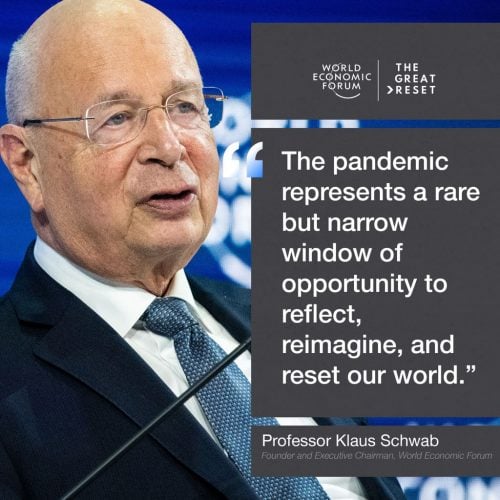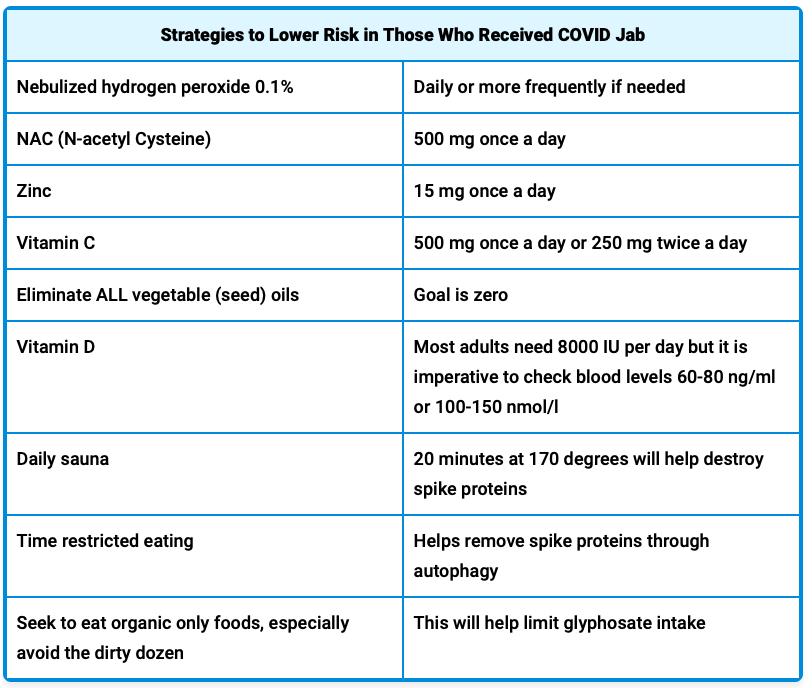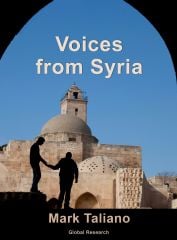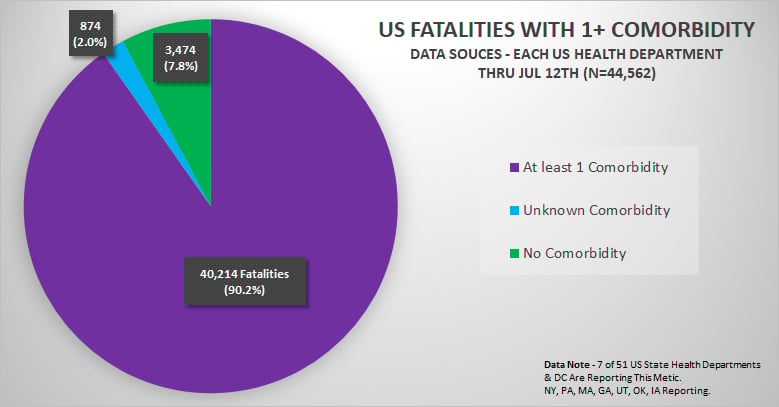All Global Research articles can be read in 51 languages by activating the “Translate Website” drop down menu on the top banner of our home page (Desktop version).
Visit and follow us on Instagram at @crg_globalresearch.
***
Reports that US and British aircraft carrying arms to ISIS were shot down by Iraqi forces (Iraqi News 2015) were met with shock and denial in western countries. Yet few in the Middle East doubt that Washington is playing a ‘double game’ with its proxy armies in Syria. A Yemeni Ansar Allah leader says ‘Wherever there is U.S. interference, there is al Qaeda and ISIS. It’s to their advantage’ (al-Bukaiti 2015). However key myths remain important, especially to western audiences. Engaging with those myths calls for reason and evidence, not just assertion.
There is no doubt that the Arab and Muslim peoples of the Middle East hate the terrorist monstrosity called ISIS, ISIL or DAESH.
Polling by the Washington-based Pew Research Centre found that 99% of Lebanese, 94% of Jordanians and 84% of Palestinians had an ‘unfavourable’ view of ISIS. As Lebanon’s constitutional system requires sectarian identification it was also found that 98% of Lebanese Sunni Muslims rejected ISIS (Poushter 2015). That latter finding discredits the common western assertion that ISIS somehow springs from Sunni communities. Less than 1% in Lebanon, 3% in Jordan and 6% in Palestine viewed the banned terrorist group favourably. The remainder did not express an opinion. Of all Syria’s neighbours, Turkey had the lowest ‘unfavourable’ view of ISIS, at 73%; the favourable score was 8% (Poushter 2015). The aim of this chapter is to help clarify what role Washington has had in creating or turning loose this Frankenstein’s monster.

Washington maintains two closely linked myths as regards terrorism in the Middle East. Then there is a ‘fall-back’ story.
The first ‘existential myth’ is that, from 2014, the US became engaged in a war against extremist terrorists, in both Iraq and Syria. This followed several years of trying to topple the Syrian Government by backing illegal armed groups, which it calls ‘moderate’. Through this myth the US claims to be playing a protective role for the benefit of the peoples of the region. The second myth is that there is a significant difference between the ‘moderate rebels’ the US arms, finances and trains, and the extremist terrorists (DAESH or ISIS) it claims to be fighting.
These claims represented a shift in the rationale for the war on Syria, from one of ‘humanitarian intervention’ to a revival of the Bush era ‘war on terror’. The ‘fall back’ story, advanced by some of Washington’s domestic critics, is that US practice in the region has created a climate of resentment amongst orthodox Sunni Muslim communities, and the extremist groups emerged as a type of ‘organic reaction’ from those communities to repeated US interventions. This story hides the more damaging conclusion that Washington and its allies directly created the extremist groups.
However there is little point in simply asserting that last version, without evidence. The ‘existential myth’ of a western war on terrorism is so insistent and pervasive, and backed by such a commitment in political capital, arms and finance, that it is very difficult for western audiences to accept this new ‘war’ might be a charade. Further, diplomacy requires that stated policy positions be pursued to their logical conclusions, and that the aims be tested. For these reasons I suggest we should document the key elements of evidence, on Washington’s relationship with the sectarian terrorists. After that we can draw better informed conclusions.
It is certainly true that prominent ISIS leaders were held in US prisons. The Afghan recruiter for ISIS, Abdul Rahim Muslim Dost, spent three years in the US prison at Guantanamo (Bienaimé 2015). ISIS leader, Ibrahim al-Badri (aka Abu Bakr al-Baghdadi) is said to have been held for between one and two years at Camp Bucca in Iraq (Giovanni 2014). In 2006, as al-Baghdadi and others were released, the Bush administration announced its plan for a ‘New Middle East’, a plan which would employ sectarian violence as part of a process of ‘creative destruction’ in the region (Nazemroaya 2006). While there have been claims that al-Baghdadi is a CIA or Mossad trained agent, these have not yet been backed up with evidence.
Nevertheless, according to Seymour Hersh’s article, ‘The Redirection’, the US planned to make use of ‘moderate Sunni states’, in particular the Saudis, to contain alleged ‘Shiia gains’ in Iraq brought about by the 2003 US invasion. These ‘moderate Sunni’ forces would carry out clandestine operations to weaken Iran and Hezbollah, key enemies of Israel (Hersh 2007). This plan brought the Saudis and Israel closer as, for somewhat different reasons, both fear Iran.
In mid-2012, US intelligence reported two important facts about the violence in Syria. Firstly, most of the armed ‘insurgency’ was being driven by extremist al Qaeda groups, and second, the sectarian aim of those groups was ‘exactly’ what the US and its allies wanted. The DIA wrote:
‘The Salafist, the Muslim Brotherhood and AQI are the major forces driving the insurgency in Syria … There is the possibility of establishing a declared or undeclared Salafist principality in eastern Syria (Hasaka and Der Zor), and this is exactly what the supporting powers [The West, Gulf monarchies and Turkey] to the [Syrian] opposition want, in order to isolate the Syrian regime’ (DIA 2012).
The US also observed (and certainly did not stop) the channelling of arms from Benghazi in Libya to ‘al Qaeda groups’ in Syria, in August 2012. These arms were detailed as including 500 Sniper rifles, 100 RPG launchers with 300 rounds and 400 howitzers missiles, of 125mm and 155mm calibre, all shipped to the Ports of Banias and Borj Islam, in Syria (Judicial Watch 2015). According to Michael Flynn, the former head of the DIA, and consistent with that intelligence, President Obama made a ‘wilful decision’ to support al Qaeda, the Muslim Brotherhood and other ‘jihadist’ groups (Newman 2015). This all confirms motive, complicity and consistency of the process, from the early days of the Syrian conflict, building on former President Bush’s ‘New Middle East’ plan. Washington covertly approved the arming of al Qaeda groups in Syria, seeing its own advantage in that.
Probably the most convincing confirmation of US complicity with its terrorist ‘enemy’ has been the admissions from several senior officials that their main regional allies have financed ISIS. Those officials include the US Vice-President, the head of the US Armed Forces and the Chair of the US Armed Forces Committee. In September 2014 General Martin Dempsey, head of the US military, told a Congressional hearing ‘I know major Arab allies who fund [ISIS]’ (Rothman 2014). Senator Lindsey Graham, of the Armed Services Committee, responded with a justification, ‘They fund them because the Free Syrian Army couldn’t fight [Syrian President] Assad, they were trying to beat Assad’ (Rothman 2014; Washington’s Blog 2014). These were honest, if criminal, admissions.
The next month, US Vice President Joe Biden went a step further, explaining that Turkey, Qatar, the UAE and Saudi Arabia ‘were so determined to take down Assad … they poured hundreds of millions of dollars and tens, thousands of tons of weapons into anyone who would fight against Assad … [including] al Nusra and al Qaeda and extremist elements of jihadis coming from other parts of the world … [and then] this outfit called ISIL’ (RT 2014; Usher 2014). Once again, these were consistent and credible admissions, except that Biden sought to exempt the US from this operation by blaming key allies. That caveat is simply not credible. The Saudis in particular are politically dependent on Washington and could not mount any major initiative without US approval. Not only that, the US systematically controls, by purchase contract and re-export license, the use of its weapons (Export.Gov 2015).
Washington’s relationship with the Saudis, as a divisive sectarian force in the region against Arab nationalism, goes back to the 1950s, when Winston Churchill introduced the Saudi King to President Eisenhower. More recently, British General Jonathan Shaw acknowledged the contribution of Saudi Arabia’s extremist ideology: ‘this is a time bomb that, under the guise of education. Wahhabi Salafism is igniting under the world really. And it is funded by Saudi and Qatari money’, Shaw said (Blair 2014). He was right.
Other evidence undermines western attempts to maintain a distinction between what came to be called the ‘moderate rebels’, by 2013 openly armed and trained by the US, and supposedly more extreme groups such as Jabhat al Nusra and ISIS. While there has indeed been some rivalry, the absence of real ideological difference is best shown by cooperation and mergers. For example the collection of US-backed groups called the ‘Free Syrian Army’ fought alongside ISIS and against the Syrian Army for several months in 2013, to gain control of Syria’s Menagh air base, near Aleppo (Paraszczuk 2013). Hoff points out that one of the ISIS commanders in the Menagh operation, Chechen Abu Omar al Shisani, ‘received American military training as part of an elite Georgian army unit in 2006’ and continued to receive US support in 2013, through his FSA alliance (Hoff 2015).
Long term cooperation between these ‘moderate rebels’ and the foreign-led Jabhat al-Nusra was seen around Daraa in the south, along the mountainous Lebanese border, in Homs-Idlib, along the Turkish border and in and around Aleppo. The words Jabhat al Nusra actually mean ‘support front’, that is, foreign support for the Syrian Islamists. Back in December 2012, as Jabhat al Nusra was banned in various countries, 29 of these groups reciprocated the solidarity in their declaration: ‘We are all Jabhat al-Nusra’ (West 2012). Soon after the 29 group signatories became ‘more than 100’ (Zelin 2012). There was never any real ideological difference between these sectarian anti-government groups.
The decline of the ‘Free Syrian Army’ network and the renewed cooperation between al Nusra and the string of reinvented US and Saudi backed groups (Dawud, the Islamic Front, the Syrian Revolutionary Front, Harakat Hazm) helped draw attention to Israel’s support for al Nusra, around the occupied Golan Heights. Since 2013 there have been many reports of ‘rebel’ fighters, including those from al Nusra, being treated in Israeli hospitals (Zoabi 2014). Israeli Prime Minister Benjamin Netanyahu even publicised his visit to wounded ‘rebels’ in early 2014. That led to a public ‘thank you’ from a Turkey-based ‘rebel’ leader, Mohammed Badie (Israel Today 2014). Semi-covertly, Israel backed all the armed groups against Syria, occasionally assisting them with its own missile attacks (Kais 2013).
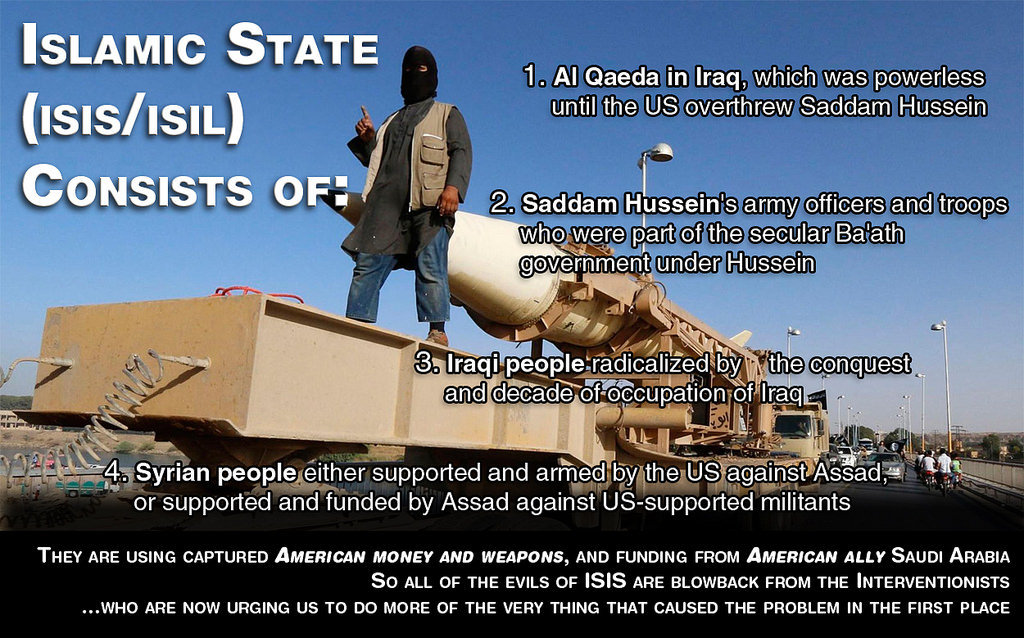
The UN peacekeeping force based in the occupied Golan reported its observations of the Israeli Defence Forces ‘interacting with’ al Nusra fighters at the border (Fitzgerald 2014). At the same time, Israeli arms were captured by Syrian forces from the extremist groups (Kais 2012; Winer 2013). In November 2014 members of the Druze minority in the Golan protested against Israeli hospitals being used to help wounded al Nusra and ISIS fighters (Zoabi 2014). This led to questions by the Israeli media, as to whether ‘Israel does, in fact, hospitalize members of al-Nusra and Daesh [ISIS]’. A military spokesman’s reply was hardly a denial: ‘In the past two years the Israel Defence Forces have been engaged in humanitarian, life-saving aid to wounded Syrians, irrespective of their identity’ (Zoabi 2014). In fact, not even a humble farmer gets across the heavily militarised Occupied Golan border to retrieve a stray goat. ‘Humanitarian’ treatment for al Qaeda terrorists is different.
The artificial distinction between ‘rebel’ and ‘extremist’ groups has been mocked by multiple reports of large scale defections and transfer of weapons, to the extremists. In July 2014 one thousand armed men in the Dawud Brigade defected to ISIS in Raqqa (Hamadee and Gutman 2014; Ditz 2014). In November defections to Jabhat al Nusra from the US-backed Syrian Revolutionary Front were reported (Newman 2014; Sly 2014).
In December, Adib Al-Shishakli, representative at the Gulf Cooperation Council of the exile ‘Syrian National Coalition’, said ‘opposition fighters’ were ‘increasingly joining’ ISIS ‘for financial reasons’ (Zayabi 2014). In that same month, the Al Yarmouk Shuhada Brigades, backed and trained for two years by US officers, were reported as defecting to ISIS, which had by this time began to establish a presence in Syria’s far south (OSNet 2014). Then, over 2014-2015, three thousand ‘moderate rebels’ from the US-backed ‘Harakat Hazzm’ collapsed into Jabhat al Nusra, taking a large stock of US arms including anti-tank weapons with them (Fadel 2015a). Video posted by al-Nusra showed these weapons being used to take over the Syrian military bases, Wadi Deif and Hamidiyeh, in Idlib province (Bacchi 2015). Debka File, a site linked to Israeli intelligence, says the heavy weaponry provided to the Syrian ‘opposition’ by the USA, Israel, the Saudis, Jordan, Turkey and Qatar includes tanks, armoured vehicles, rockets launchers, machine-guns, anti-aircraft weapons and ‘at least four types of anti-tank weapons’ (Debka 2015). The scale and consistency of the ‘defections’ strongly suggests management to channel these arms, along with fighters, to make ISIS the best equipped group. A similar conclusion was noted by US Senator John Kiriakou (Sputnik 2015b).
Recruitment of fighters for ISIS was certainly a heavily financed affair, and not an ‘organic’ drift of resentful ‘Sunni’ youth. In late 2014 the Afghan Abdul Rahim Muslim Dost was said to be ‘leading efforts in northern Pakistan to recruit fighters for ISIS’ (Bienaimé 2015). Soon after this report, Syrian jihadist Yousaf al Salafi, arrested in Pakistan, said he had been hired to recruit young men in Pakistan to fight with ISIS in Syria. He says he received $600 for each fighter he sent, working with a Pakistani sheikh and using US money (Variyar 2015). Who knows what the middle-men took, but this sum is several times the salary of an average Syrian soldier. As with Jabhat al Nusra, recruits came from a wide range of countries. Cuban journalists interviewed four captured ISIS jihadists from Turkmenistan and Kyrgyzstan. They were recruited in a larger group which had passed freely through Turkey and across the border into Syria. They were assisted to participate in this ‘holy war’ by offers of a house, a good salary and a bride. More than 300 people were killed by their car bombs (PL 2015).
ISIS had US weapons by various means in both Iraq and Syria when, in late 2014, a ‘non-aggression pact’ was reported in the southern area of Hajar al-Aswad between ‘moderate rebels’ and ISIS, as both recognised a common enemy in Syria: ‘the Nussayri regime’, a sectarian way of referring to Alawi Muslims. Some reported ISIS had purchased weapons from the ‘rebels’ (AFP 2015).
With ‘major Arab allies’ directly backing ISIS and a steady stream of fighters and arms passing to ISIS from the collapsing US-backed ‘moderate rebel’ groups, it is a small leap to recognise that US and ‘coalition’ flights to ISIS areas (supposedly to ‘degrade’ the extremists) might also have become covert supply lines. That is precisely what senior Iraqi sources began saying, in late 2014 and early 2015 (Iraq News 2014). In mid-2014 ISIS began seizing US weapons, but this was put down to incompetence on the part of the Iraqi Army (Sharma and Nestel 2014).
However, soon after that, US air drops of arms were seized by ISIS troops on the ground. Was this US incompetence or US planning? As reported by both Iraqi and Iranian media, Iraqi MP Majid al-Ghraoui said in January that ‘an American aircraft dropped a load of weapons and equipment to the ISIS group militants at the area of al-Dour in the province of Salahuddin’ (Sarhan 2015). Photos were published of ISIS retrieving the weapons. The US admitted seizures of its weapons but said this was a ‘mistake’ (MacAskill and Chulov 2014). Then in February Iraqi MP Hakem al-Zameli said the Iraqi army had shot down two British planes which were carrying weapons to ISIS in al-Anbar province. Again, photos were published of the wrecked planes. ‘We have discovered weapons made in the US, European countries and Israel from the areas liberated from ISIL’s control in Al-Baqdadi region’, al-Zameli said (FNA 2015a).
The Al-Ahad news website quoted Head of Al-Anbar Provincial Council Khalaf Tarmouz saying that a US plane supplied the ISIL terrorist organization with arms and ammunition in Salahuddin province (FNA 2015b). Also in February an Iraqi militia called Al-Hashad Al-Shabi said they had shot down a US Army helicopter carrying weapons for ISIL in the western parts of Al-Baqdadi region in Al-Anbar province. Again, photos were published (FNA 2015a). After that, Iraqi counter-terrorism forces were reported as having arrested ‘four foreigners who were employed as military advisors to the ISIL fighters’, three of whom were American and Israeli (Adl 2015). Israel’s link to ISIS seems to have passed well beyond its border areas. In late 2015 an Israeli Colonel Yusi Oulen Shahak was said to have been arrested with an ISIS group in Iraq.
The Iraqi Government linked militia said Shahak, from the Golani brigade, was a colonel who ‘had participated in the Takfiri ISIL group’s terrorist operations’ (FNA 2015c). Six senior Iraqi officials have been cited detailing US weaponry and intelligence support for ISIS. Captured ISIS fighters said the US had provided ‘intelligence about the Iraqi forces’ positions and targets’ (FNA 2015d). The western media avoided these stories altogether, because they are very damaging to Washington’s ‘existential myth’ of a ‘War on ISIS’. However they certainly help explain why Baghdad does not trust the US military.
In Libya in 2015 a key US collaborator in the overthrow of the Gaddafi government announced himself the newly declared head of the ‘Islamic State’ in North Africa (Sputnik 2015a). Abdel Hakim Belhaj was held in US prisons for several years, then ‘rendered’ to Gaddafi’s Libya, where he was wanted for terrorist acts. As former head of the al-Qaeda-linked Libyan Islamic Fighting Group, then the Tripoli-based ‘Libyan Dawn’ group, Belhaj was, in the past, defended by Washington and praised by US Congressmen John McCain and Lindsey Graham (Sputnik 2015a).
Evidence of the covert relationship between Washington and ISIS is substantial and helps explain what Syria’s Deputy Foreign Minister Faysal Mikdad called Washington’s ‘cosmetic war’ on ISIS (SANA 2015). The terrorist group was herded away from the Kurdish areas of northern Iraq but allowed to operate freely in Eastern Syria, against the Syrian Army (Fadel 2015b). The extremist group is used to justify a foothold Washington keeps in the region, weakening both Syria and Iraq. But Washington’s ‘war’ on ISIS has been ineffective. Studies by Jane’s Terrorism and Insurgent database showed that ISIS attacks and killings in Iraq increased strongly in the months after US air attacks began (Lestch 2014). The main on-the-ground fighting has been carried out by the Syrian Army, with its allies, and the Iraqi armed forces, with support from Iran (Lister 2015).
All this has been reported perversely in the western media. The same channels that prominently report (virtually celebrating) the ISIS killing of Syrian soldiers have also claimed the Syrian Army was avoiding or ‘not fighting’ ISIS (Richter 2014; Vinograd and Omar 2014). That alleged ‘unwillingness’ was part of the justification for US bombing inside Syria, another false pretext. While it is certainly the case that Syrian priorities remained in the heavily populated west, multiple media reports make it clear that, well before the strikes by the Russian air force in October 2015, the Syrian Arab Army was the major force engaged with ISIS (YNet 2014; al Arabiya 2014; Reuters 2015), as also suffering the worst casualties from that terrorist group (Webb 2014). When it comes to avoiding ISIS, the reverse has been the case. The evidence tells us that Washington’s lack of will against ISIS is linked to the fact that the terrorist group remains a key tool against the Syrian Government. That also explains why the US refuses to coordinate with the Syrian Army against ISIS (King 2015). This is consistent with the central ongoing aim of ‘regime change’ in Damascus or, failing that, dismemberment of the country. Such an aim was rejected by the US and others at a Vienna conference (Daily Star 2015); but US practice speaks louder than its words.
The contradictions of the US position – of claiming to fight ISIS while covertly protecting it – were thrown into sharp relief when in late September 2015 Russia decided to add air power to the Syrian Army’s efforts, against all the terrorist groups. When the US refused to cooperate with Russia, Washington’s media and NGO cheer squads immediately shifted their chorus of Syrian Government ‘killing civilians’ to that of Russia ‘killing civilians’. That had little effect on matters. At the time of writing, with that powerful Russian assistance, ISIS and the others are retreating and the Syrian Arab Army and its allied militia are gradually reclaiming areas that have been occupied for some time (AFP 2015).
Closer cooperation between Russia, Iran, Iraq, Syria and Lebanon’s Hezbollah threaten to seriously degrade US dominance in the region. In the Iraqi military’s recent offensive on ISIS-held Tikrit, the Iranian military emerged as Iraq’s main partner. Washington was sidelined, causing consternation in the US media. General Qasem Suleimani, head of Iran’s Quds Force was said to have been a leading player in the Tikrit operation (Rosen 2015). Not least amongst the new developments has been the creation of an intelligence centre based in Baghdad and shared by Russia, Syria, Iraq and Iran plus Hezbollah (4+1). This signals a new measure of independence for the Baghdad government, long thought to be a puppet captured by Washington (Boyer and Scarborough 2015).
This article has presented sufficient evidence for us to safely draw these conclusions.
First, Washington planned a bloody wave of regime change in its favour in the Middle East, getting allies such as the Saudis to use sectarian forces in a process of ‘creative destruction’.
Second, the US directly financed and armed a range of so-called ‘moderate’ terrorist groups against the sovereign state of Syria while its key allies the Saudis, Qatar, Israel and Turkey financed, armed and supported with arms and medical treatment every anti-Syrian armed group, whether ‘moderate’ or extreme.
Third, ‘jihadists’ for Jabhat al Nusra and ISIS were actively recruited in many countries, indicating that the rise of those groups was not due to a simple anti-western ‘Sunni’ reaction within the region.
Fourth, NATO member Turkey functioned as a ‘free transit zone’ for every type of terrorist group passing into Syria.
Fifth, there is testimony from a significant number of senior Iraqi officials that US arms have been delivered directly to ISIS.
Sixth, the ineffective, or at best selective, US ‘war’ against ISIS tends to corroborate the Iraqi and Syrian views that there is a controlling relationship. In sum we can conclude that the US has built a command relationship with all of the anti-Syrian terrorist groups, including al Nusra ISIS, either directly or through its close regional allies, the Saudis, Qatar, Israel and Turkey. Washington has attempted to play a ‘double game’ in Syria and Iraq, using its old doctrine of ‘plausible deniability’ to maintain the fiction of a ‘war on terrorism’ for as long as is possible.
*
Note to readers: Please click the share buttons above or below. Follow us on Instagram, @crg_globalresearch. Forward this article to your email lists. Crosspost on your blog site, internet forums. etc.
Sources
Adl, Carol (2015) ‘US, Israeli Military Advisors Arrested In Iraq, Accused Of Aiding ISIS’, Your News Wire, 7 March, online: http://yournewswire.com/us-israeli-military-advisors-arrested-in-iraq-accused-of-aiding-isis/
AFP (2014) ‘Syria rebels, IS in ‘non-aggression’ pact near Damascus’, Global Post, 13 September, online: http://www.globalpost.com/dispatch/news/afp/140912/syria-rebels-non-aggression-pact-near-damascus
AFP (2015) ‘Syria gaining ground in ‘nearly every front’’, The Daily Star, 23 November, online: http://www.thedailystar.net/world/syria-gaining-ground-nearly-every-front-176662
Anderson, Tim (2015) ‘Daraa 2011: Syria’s Islamist Insurrection in Disguise’, Global Research, 5 July, online: http://www.globalresearch.ca/daraa-2011-syrias-islamist-insurrection-in-disguise/5460547
Arabiya al (2014) ‘Syrian Govt. bombs ISIS stronghold of Raqqa, 63 killed’, 25 November, online: http://english.alarabiya.net/en/News/middle-east/2014/11/26/-Syrian-government-airstrikes-kill-63-in-Raqqa-monitor.html
Bacchi, Umberto (2015) ‘Syria: al-Qaeda Nusra Front shows off huge cache of US weapons seized from moderate Harakat Hazm rebels’, International Business Times, 4 March, online: http://www.ibtimes.co.uk/syria-al-qaeda-nusra-front-shows-off-us-weapons-seized-moderate-harakat-hazm-rebels-1490378
Bienaimé, Pierre (2014) ‘ISIS Now Has A Point Man Recruiting Fighters In Pakistan’, Business Insider, 20 November, online: http://www.businessinsider.com.au/isis-now-has-a-point-man-recruiting-fighters-in-pakistan-2014-11
Blair, David (2014) ‘Qatar and Saudi Arabia ‘have ignited time bomb by funding global spread of radical Islam’, Telegraph, 4 October, online: http://www.telegraph.co.uk/news/worldnews/middleeast/iraq/11140860/Qatar-and-Saudi-Arabia-have-ignited-time-bomb-by-funding-global-spread-of-radical-Islam.html
Blanford, Nicholas (2011) ‘Assad regime may be gaining upper hand in Syria’, Christina Science Monitor, 13 May, online: http://www.csmonitor.com/World/Middle-East/2011/0513/Assad-regime-may-be-gaining-upper-hand-in-Syria
Boyer, Dave and Rowan Scarborough (2015) ‘White House alarmed as Iraq uses intelligence center operated by Russia, Iran, Syria’, Washington Times, 13 October, online: http://www.washingtontimes.com/news/2015/oct/13/iraq-uses-intelligence-center-operated-by-russia-i/?page=all
Bukaiti al, Mohammed (2015) ‘Yemen’s Hidden War’, Rolling Stone, October, Issue 767, p.82; also online: http://www.rollingstone.com/politics/news/yemens-hidden-war-20150730
Curtis, Mark (2012) Secret Affairs: Britain’s collusion with radical Islam, Serpent’s Tail, London
Daily Star (2015) ‘Moallem welcomes Vienna statement on Syria’, 2 November, online: https://www.dailystar.com.lb/News/Middle-East/2015/Nov-02/321197-moallem-welcomes-vienna-statement-on-syria.ashx
Debka (2015) ‘Assad loses battles as US, Israel, Turkey, Jordan, Qatar and UAE arm Al Qaeda’s Syrian branches’, 4 May, online: http://www.debka.com/article/24578/Assad-loses-battles-as-US-Israel-Turkey-Jordan-Qatar-and-UAE-arm-Al-Qaeda%E2%80%99s-Syrian-branches
DIA (2012) Intelligence Report ‘R 050839Z Aug 2012’ in Judicial Watch, Pgs. 287-293 (291) JW v DOD and State 14-812, 18 May, online: http://www.judicialwatch.org/document-archive/pgs-287-293-291-jw-v-dod-and-state-14-812-2/
Ditz, Jason (2014) ‘1,000-Strong Syrian Rebel Brigade Defects to ISIS: FSA Rebels Demand US Arms, Threaten to Quit War’, Anti-War.Com, 8 July, online: http://news.antiwar.com/2014/07/08/1000-strong-syrian-rebel-brigade-defects-to-isis/
Export.Gov (2015) ‘Dual Use Export Licenses’, US Export Agency, online: http://www.export.gov/regulation/eg_main_018229.asp
Fadel, Leith (2015a) ‘The Last of the “Moderates” – Harakat Hazzm Disbands to Join Islamists’, Al Masdar, 2 march, online: http://www.almasdarnews.com/article/last-moderates-harakat-hazzm-disbands-join-islamists/
Fadel, Leith (2015b) ‘Anti-ISIS Coalition Uses ISIS to Fight Assad in Favor of the Rebels’, Al Masdar, 2 October, online: http://www.almasdarnews.com/article/anti-isis-coalition-uses-isis-to-fight-assad-in-favor-of-the-rebels/
Fitzgerald, Denis (2014) ‘UN peacekeepers observe IDF interacting with al Nusra in Golan’, UN Tribune, 4 December, online: http://untribune.com/un-peacekeepers-observe-idf-interacting-al-nusra-golan/
FNA (2015a) ‘Iraq’s Popular Forces Release Photo of Downed US Chopper Carrying Arms for ISIL’, Fars News Agency, 28 February, online: http://english.farsnews.com/newstext.aspx?nn=13931209001345
FNA (2015b) ‘Iraqi Army Downs Two British Planes Carrying Weapons for ISIL Terrorists’, Global research, 24 February, online: http://www.globalresearch.ca/iraqi-army-downs-two-british-planes-carrying-weapons-for-isil-terrorists/5433089
FNA (2015c) ‘Israeli Colonel Leading ISIL Terrorists Captured in Iraq’, Fars News Agency, 22 October, online: http://english.farsnews.com/newstext.aspx?nn=13940730000210
FNA (2015d) ‘Captured ISIL leaders in Iraq confess receiving intelligence support from US’, Fars New Agency, SOTT, 25 October, online: http://www.sott.net/article/304825-Captured-ISIL-leaders-in-Iraq-confess-receiving-intelligence-support-from-US
Giovanni di, Janine (2014) ‘Who Is ISIS Leader Abu Bakr al-Baghdadi?’ Newsweek, 8 December, online: http://www.newsweek.com/2014/12/19/who-isis-leader-abu-bakr-al-baghdadi-290081.html
Hamadee al, Mousab and Roy Gutman (2014) ‘1,000 Syrian rebels defect to Islamic State in sign it’s still strengthening’, McClatchy, 8 July, online: http://www.mcclatchydc.com/news/nation-world/world/middle-east/article24770164.html
Hersh, Seymour (2007) The Redirection’, The New Yorker, 5 March, online: http://www.newyorker.com/magazine/2007/03/05/the-redirection
Hoff, Brad (2015) ‘ISIS Leader Omar al-Shishani Fought Under U.S. Umbrella as Late as 2013’, Levant Report, 18 September, online: http://levantreport.com/tag/menagh-airbase/
Iraqi News (2015) American aircraft dropped weapons to ISIS, says MP, 4 January, online: http://www.iraqinews.com/iraq-war/american-aircraft-airdropped-weapons-to-isis-says-mp/
Israel Today (2014) ‘Syrian Rebels Thank Netanyahu for Israel’s Compassion’, 23 February, online: http://www.israeltoday.co.il/NewsItem/tabid/178/nid/24453/Default.aspx
Judicial Watch (2015) ‘Judicial Watch: Defense, State Department Documents Reveal Obama Administration Knew that al Qaeda Terrorists Had Planned Benghazi Attack 10 Days in Advance’, 18 May, online: http://www.judicialwatch.org/press-room/press-releases/judicial-watch-defense-state-department-documents-reveal-obama-administration-knew-that-al-qaeda-terrorists-had-planned-benghazi-attack-10-days-in-advance/
Kais, Roi (2012) ‘Syria: Rebels use Israeli arms’, YNet, 27 January, online: http://www.ynetnews.com/articles/0,7340,L-4181733,00.html
Kais, Roi (2013) ‘US confirms: Israel attacked Syrian missile base’, YNet, 31 October, online: http://www.ynetnews.com/articles/0,7340,L-4448123,00.html
King, Justin (2015) ‘Mounting Evidence Shows US Does Not Want ISIS Defeated’, Mint Press, 24 February, online: http://www.mintpressnews.com/mounting-evidence-shows-us-does-not-want-isis-defeated/202479/
Lestch, Corrinne (2014) ‘U.S. airstrikes fail to slow down brutal ISIS attacks: report’, Daily News, 14 November, online: http://www.nydailynews.com/news/world/u-s-airstrikes-fail-reduce-brutal-isis-attacks-report-article-1.2011021
Lister, Tim (2015) ‘Battle for Tikrit: Despite billions in aid, Iraqi army relies on militia, and Iran’, CNN, 11 March, online: http://edition.cnn.com/2015/03/11/middleeast/lister-iraq-iran/
MacAskill, Ewen and Martin Chulov (2014) ‘Isis apparently takes control of US weapons airdrop intended for Kurds’, Guardian, 22 October, online: http://www.theguardian.com/world/2014/oct/22/isis-us-airdrop-weapons-pentagon
Nazemroaya, Mahdi Darius (2006) Plans for Redrawing the Middle East: The Project for a ‘New Middle East’, Global Research, 18 November, online: http://www.globalresearch.ca/plans-for-redrawing-the-middle-east-the-project-for-a-new-middle-east/3882
Newman, Alex (2014) ‘“Moderate” Rebels Armed by Obama Join al-Qaeda, ISIS’, New American, 21 November, online: http://www.thenewamerican.com/world-news/asia/item/19583-moderate-rebels-armed-by-obama-join-al-qaeda-isis
Newman, Alex (2015) ‘U.S. Defense Intel Chief: Obama Gave “Wilful” Aid to Al-Qaeda’, New American, 11 August, online: http://www.thenewamerican.com/usnews/foreign-policy/item/21384-u-s-defense-intel-chief-obama-gave-willful-aid-to-al-qaeda
Paraszczuk, Joanna (2013) ‘Syria Analysis: Which Insurgents Captured Menagh Airbase — & Who Led Them? EA Worldview, 7 August, online: http://eaworldview.com/2013/08/syria-feature-which-insurgents-captured-the-menagh-airbase/
PL (2015) ‘Yihadistas revelan cómo se reclutan militantes para el Estado Islámico’, CubaDebate, 25 June, online: http://www.cubadebate.cu/noticias/2015/06/25/yihadistas-arrestados-en-siria-revelan-como-ee-uu-recluta/#.ViwjaSv9iF_
Poushter, Jacob (2015) ‘In nations with significant Muslim populations, much disdain for ISIS’, Pew Research Centre, 17 November, online: http://www.pewresearch.org/fact-tank/2015/11/17/in-nations-with-significant-muslim-populations-much-disdain-for-isis/
Putin, Vladimir (2015) ‘Who are Syria’s moderate rebels?’ Daily Star, 24 October, online: http://www.thedailystar.net/world/who-are-syrias-moderate-rebels-161989
OSNet (2014) ‘Syrian rebels in the Golan defect to ISIS’, OS Net daily, December, online: http://osnetdaily.com/2014/12/syrian-rebels-golan-defect-isis/
Reuters (2015) ‘Syrian air strike kills two Islamic State commanders’, 7 March, online: http://uk.reuters.com/article/2015/03/07/uk-mideast-crisis-syria-islamicstate-idUKKBN0M30F320150307
Richter, Greg (2014) ‘Syrian National Coalition President: Assad, ISIS Not Fighting Each Other’, NewsMax, 30 September, online: http://www.newsmax.com/Newsmax-Tv/syrian-coalition-assad-isis/2014/09/30/id/597645/
Rosen, James (2015) ‘Quds force leader, commanding Iraqi forces against ISIS, alarms Washington’, Fox News, 5 March, online: http://www.foxnews.com/politics/2015/03/05/iran-quds-force-leader-commanding-iraqi-forces-against-isis-alarms-americans/
Rothman, Noah (2014) ‘Dempsey: I know of Arab allies who fund ISIS’, YouTube, 16 September, online: https://www.youtube.com/watch?v=nA39iVSo7XE
RT (2014) ‘Anyone but US! Biden blames allies for ISIS rise’, 3 October, online: https://www.youtube.com/watch?v=11l8nLZNPSY
SANA (2015) ‘Mikdad: US Turkish agreement to arm and train terrorists means failure of de Mistura initiative’, Syrian Arab News Agency, 21 February, online: http://www.sana.sy/en/?p=29385
Sarhan, Amre (2015) ‘American aircraft dropped weapons to ISIS, says MP’, Iraqi News, 4 January, online: http://www.iraqinews.com/iraq-war/american-aircraft-airdropped-weapons-to-isis-says-mp/
Sharma, Versha and M.L. Nestel (2014) ‘Terrorists Seize U.S. Weapons in Iraq’, Vocativ, 16 June, online: http://www.vocativ.com/world/iraq-world/terrorists-seize-u-s-weapons-iraq/
Sly, Liz (2014) ‘U.S.-backed Syria rebels routed by fighters linked to al-Qaeda’, Washington Post, 2 November, online: https://www.washingtonpost.com/world/us-backed-syria-rebels-routed-by-fighters-linked-to-al-qaeda/2014/11/02/7a8b1351-8fb7-4f7e-a477-66ec0a0aaf34_story.html
Sputnik (2015a) ‘US Ally in Libya Joins ISIL and Leads Its Forces in the Country – Reports’, 3 May, online: http://sputniknews.com/news/20150305/1019074958.html
Sputnik (2015b) ‘US Congress Arms ISIL in Syria Via ‘Moderate’ Opposition – ex-CIA Officer’, 7 October, online: http://sputniknews.com/middleeast/20151007/1028130762/US-congress-arms-ISIL-in-syria-via-moderate-opposition.html
Usher, Barbara Plett (2014) ‘Joe Biden apologised over IS remarks, but was he right?’ BBC News, 7 October, online: http://www.bbc.com/news/world-us-canada-29528482
Variyar, Mugdha (2015) ‘Funds for ISIS Recruitment Came From US, Says Pakistani ISIS Commander’, IB Times, 29 January, online: http://www.ibtimes.co.in/funds-isis-recruitment-came-us-says-pakistani-isis-commander-621906
Vinograd, Cassandra and Ammar Cheikh Omar (2014) ‘Syria, ISIS Have Been ‘Ignoring’ Each Other on Battlefield, Data Suggests’, NBC News, 11 December, online: http://www.nbcnews.com/storyline/isis-terror/syria-isis-have-been-ignoring-each-other-battlefield-data-suggests-n264551
Washington’s Blog (2014) ‘Top U.S. Military Official: Our Arab “Allies” Support ISIS’, 16 September, online: http://www.washingtonsblog.com/2014/09/top-u-s-military-official-arab-allies-support-isis.html
Webb, Sam (2014) ‘Up to 70 Syrian army chiefs beheaded by ISIS after jihadis make advance on second city of Idlib that has been held by Assad’s forces for more than a year’, Daily Mail, 28 October, online: http://www.dailymail.co.uk/news/article-2810598/Up-70-Syrian-army-chiefs-beheaded-Isis-jihadis-make-advance-second-city-Idlib-held-Assad-s-forces-year.html
West, Diana (2012) ‘Syrian Rebels: We Are All Jabhat Al Nusra (Al Qaeda)’, Free Republic, 12 December, online: http://www.freerepublic.com/focus/news/2967671/posts
Winer, Stuart (2013) ‘Syria says it captured Israeli weapons from rebels’, Times of Israel, 21 August, online: http://www.timesofisrael.com/syria-says-it-captured-israeli-weapons-from-rebels/
YNet (2014) ‘Syrian strikes on ISIS stronghold kill 29’, 6 September, online: http://www.ynetnews.com/articles/0,7340,L-4568098,00.html
Zayabi al, Adib (2014) ‘Syrian rebels increasingly joining ISIS: Coalition ambassador’, Asharq al-Awsat, 25 December, online: http://english.aawsat.com/2014/12/article55339780/syrian-rebels-increasingly-joining-isis-syrian-national-coalition-ambassador
Zelin, Aaron Y. (2012) ‘Rally ‘Round the Jihadist’, Washington Institute, 11 December, online: http://www.washingtoninstitute.org/policy-analysis/view/rally-round-the-jihadist
Zoabi, Hiba (2014) ‘Israel said to treat wounded members of IS and radical Syrian groups’, i24News, 10 November, online: http://www.i24news.tv/app.php/en/news/israel/diplomacy-defense/50457-141110-israel-said-to-treat-wounded-members-of-is-and-radical-syrian-groups
Order Mark Taliano’s Book “Voices from Syria” directly from Global Research.
Mark Taliano combines years of research with on-the-ground observations to present an informed and well-documented analysis that refutes the mainstream media narratives on Syria.
ISBN: 978-0-9879389-1-6
Author: Mark Taliano
Year: 2017
Pages: 128 (Expanded edition: 1 new chapter)
List Price: $17.95
Special Price: $9.95





